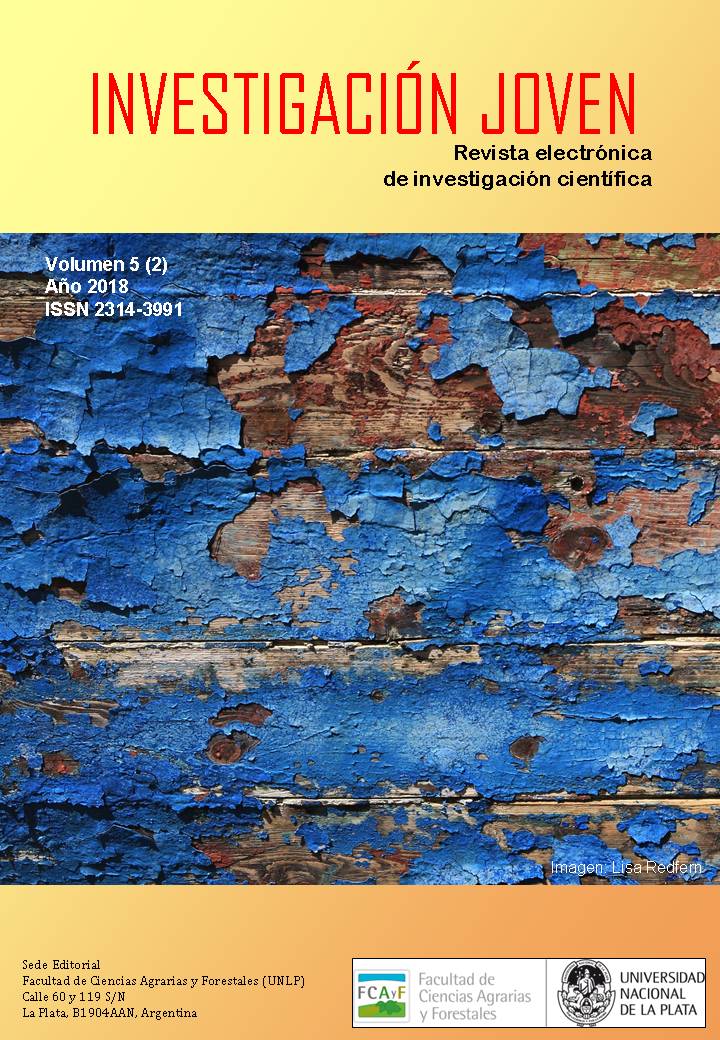Water borne EPOXY paints with commercial phosphates as anticorrosive pigments
Keywords:
Corrosion, SAE 1010 steel, ZCPP, ZAPP, ElectrochemistryAbstract
The application of anticorrosive paints is one of the most widely used protection methods to prevent steel corrosion. Traditionally, paints have been formulated with organic solvents and toxic anticorrosive pigments. Currently one of the objectives of the area is to develop new formulations of paints in which the organic solvents are replaced by water.
The objective of this work was to develop formulations and to prepare water-based epoxy paints with second and third generation phosphates as anticorrosive pigments. The electrochemical characterization of the painted steel was carried out by: conductivity measurements, linear polarization tests and corrosion potential measurements. The paint film tested was evaluated according to the standard for blistering (ASTM D714-02) and corrosion (ASTM D610-08) during exposure to salt spray cabinet (ASTM B 117).
The results show that formulated and prepared water-borne paints provide acceptable anticorrosive properties.
Downloads
References
M. Bethencourt, J. Botana, M.J. Cano, R.M Osuna, M. Marcos-Bárcena, “Comportamiento anticorrosivo de pinturas de base agua aplicadas en aceros”, Bol. Soc. Esp. Ceram. 43, 2004, 209-211.
M. Hernández, J. Genescá, J. Uruchurtu, F. Galliano, D. Landoltd, “Effect of an inhibitive pigment zinc-aluminum-phosphate (ZAP) on the corrosion mechanisms of steel in waterborne coatings”, Prog. Org. Coat. 56, 2006, 199-206.
R. Duraisamy, T. Vasudevan, “Evaluation of Corrosion Stability of Water Soluble Epoxy-Ester Primer through Electrochemical Studies”, Mater. Sci. Appl. 3, 2012, 333-347.
S.N. Roselli, R. Romagnoli, C. Deyá, “The anti-corrosion performance of water-borne paints in longtermtests”, Prog. Org. Coat. 109, 2017, 172-178.
G. Reinhard, “Formulation of water-borne dispersions for corrosion-protective primers”,Prog. Org. Coat. 18, 1990, 123-145.
B. delAmo, R. Romagnoli, C. Deyá, J.A. González, “High performance water-basedpaintswith non-toxicanticorrosivepigments”, Prog. Org. Coat. 45, 2002, 389-397.
N. Wang, Y. Zhang, J. Chen, J. Zhang, Q. Fang, “Dopaminemodified metal-organicframeworkson anti-corrosionproperties of waterborneepoxycoatings”, Prog. Org. Coat. 109, 2017, 126-134.
B. Bieganska, M. Zubielewicz, E. Smieszek, “Anticorrosivewater-borne paints”, Prog.Org. Coat. 15, 1987, 33-56.
J. Sinko, “Challenges of chromate inhibitor pigments replacement in organic coatings”, Prog. Org. Coat. 42, 2001, 267-282.
F. Korać, S. Gutić, I. Zukić, J. Ostojić, S. Herenda, S. Gojak-Salimović, “Anticorrosion Performance of eco-friendly Paint Coatings”, Bull. Chem. Tech. B&H. 41, 2013, 37-47.
S. N. Roselli, G. Lendvay-Györik, G. Mészáros, C. Deyá, R. Romagnoli, “Anticorrosive water borne paints free from zinc and with reduced phosphate content”, Prog. Org. Coat. 112, 2017, 27-36.
M.R. Heydarpour, A. Zarrabi, M.M. Attar, B. Ramezanzadeh, “Studying the corrosion protection properties of an epoxy coating containing different mixtures of strontium aluminum polyphosphate (SAPP) and zinc aluminum phosphate (ZPA) pigments”, Prog. Org.Coat. 77, 2014, 160-167.
M.C. Deyá, G. Blustein, R. Romagnoli, B. delAmo, “The influence of the anion type on the anticorrosive behaviour of inorganic phosphates”,Surf. Coat. Technol. 150, 2002, 133-142.
A.O. S. Leite, W.S. Araújo, I.C.P. Margarit, A.N. Correia, P. de Lima-Neto, “Evaluation of the Anticorrosive Properties of Environmental Friendly Inorganic Corrosion Inhibitors Pigments”, J. Braz. Chem. Soc. 16, 2005, 756-762.
D.Veselý, V. Jašková, “Efficiency of anticorrosive pigments based on metal phosphates”
Transfer inovácií 15, 2009, 151-158.
V.F. Vetere, M.C. Deyá, R. Romagnoli, B. delAmo, “Calcium tripolyphosphate: An anticorrosive pigment for paint”, J. Coat. Technol. 73, 2001, 57-63.
M.C. Deyá, V.F. Vetere, R. Romagnoli, B. delAmo, “Zinc tripolyphosphate: An anticorrosive pigment for paints”, Surf. Coat. Int. B Coating Trans. 86, 2003, 79-85.
M. Deyá, A.R Di Sarli, B. del Amo, R. Romagnoli, “Performance of Anticorrosive Coatings Containing Tripolyphosphates in Aggressive Environments”, Ind. Eng. Chem. Res. 47, 2008, 7038–7047.
R. Naderi, M.M. Attar, “The inhibitive performance of polyphosphate-based anticorrosion pigments using electrochemical techniques”, Dyes and Pigm. 80, 2009, 349-354.
R. Naderi, M.M. Attar, “Electrochemical assessing corrosion inhibiting effects of zinc aluminum polyphosphate (ZAPP) as a modified zinc phosphate pigment”, Electrochim. Acta 53, 2008, 5692-5696.
S.M. Mousavifard, P. MalekMohammadi Nouri, M.M. Attar, B. Ramezanzadeh, “Theeffects of zinc aluminumphosphate (ZPA) and zinc aluminumpolyphosphate (ZAPP) mixtures oncorrosioninhibition performance of epoxy/polyamidecoating”, J. Ind. Eng. Chem. 19, 2013, 1031-1039.
G. Blustein, M.C Deyá, R. Romagnoli, B. delAmo, “Three generations of inorganic phosphates in solvent and water-borne paints: A synergism case”, Appl. Surf. Sci. 252, 2005, 1386-1397.
J.N Murray, “Electrochemical test methods for evaluating organic coatings on metals:An update. Part I Introduction and generalities regarding electrochemical testing of organiccoatings”, Prog. Org. Coat. 30, 1997, 225-233.
H.Leidheiser Jr.,“Electrical and electrochemical measurements as predictors of corrosion at the metal-organic coating interface”,Prog. Org. Coat. 7, 1979, 79-104.
















